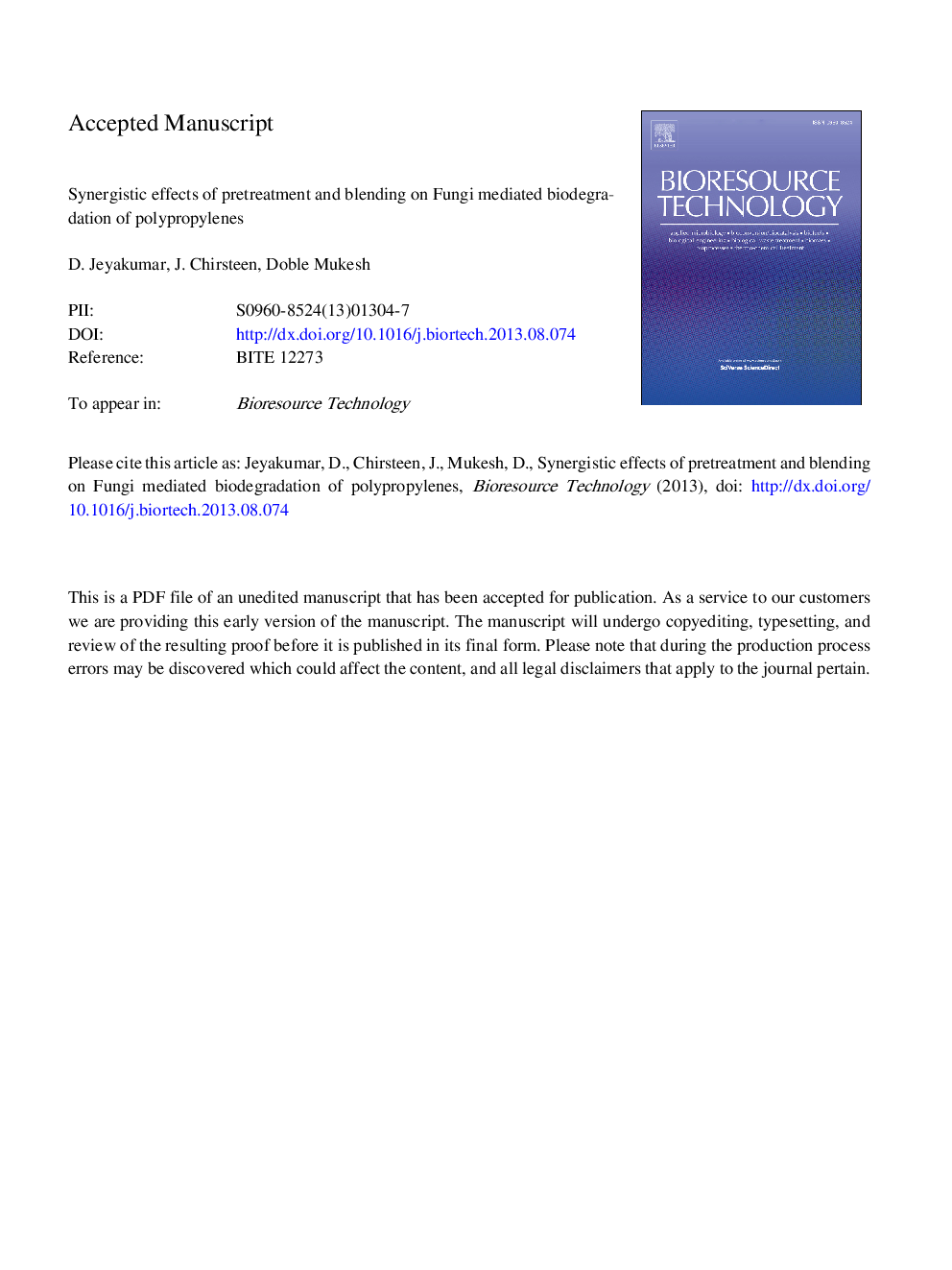| Article ID | Journal | Published Year | Pages | File Type |
|---|---|---|---|---|
| 7080082 | Bioresource Technology | 2013 | 36 Pages |
Abstract
Environmental issues raise concern on restrict the use of nondegradable polymers and encourage the development of degradable once. This study is carried out was to understand the rate of biodegradation of untreated and pretreated (100 °C or UV for 10 days) polypropylene (PP), pro-oxidant blended (MI-PP) and starch blended polypropylenes (ST-PP) with two different fungal strains, Phanerochaete chrysosporium NCIM 1170 (F1) and Engyodontium album MTP091 (F2). About 18.8% and 9.42% gravimetric weight loss and 79% and 57% TGA weight loss (at 400 °C) were observed with UV pretreated MI-PP in 1 year with F2 and F1 strains respectively. The amount of lacasse produced by the organism and biomass attached on the polymer surface are correlated with TGA weight loss (0.6-0.93). The formation of extractable oxygenated compounds and unoxidized low-molecular weight hydrocarbons are high in pretreated and blended samples. These results indicate blending and pretreatment strategy leads to an optimal waste-disposal strategy.
Related Topics
Physical Sciences and Engineering
Chemical Engineering
Process Chemistry and Technology
Authors
D. Jeyakumar, J. Chirsteen, Mukesh Doble,
